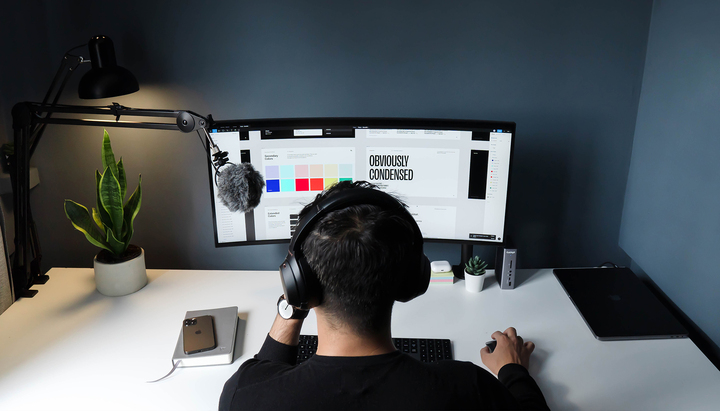Nonprofit organizations are essential for tackling societal challenges and uplifting our communities. However, to fulfill their missions, they must have the backing of donors, volunteers, and supporters.
A robust nonprofit branding strategy plays a pivotal role in securing this support. In this article, we’ll delve into how branding influences nonprofits, elevating their public image and engagement, and boosting fundraising efforts. We’ll also outline steps to craft an effective nonprofit branding strategy, its integration within your organization, and the significance of marketing in the nonprofit sector.
From Mission to Message: Branding’s Impact on Nonprofit Success
Nonprofit branding transcends logos and colors; it’s about forging an identity that deeply connects with the intended audience. A robust brand instills trust, credibility, and emotional ties—vital for engagement and fundraising success. It serves as a conduit to convey the organization’s mission, values, and impact, shaping public perception and fostering a sense of community.
In a crowded nonprofit landscape, differentiation is key. A distinctive brand sets an organization apart, making identification, trust, and engagement easier. To achieve this, extensive research is the cornerstone of any effective nonprofit branding strategy. An intimate understanding of the organization’s values, mission, target audience, and core activities informs the creation of a brand identity that authentically mirrors the nonprofit’s essence, forging connections with the right audience.
Read More: 3 Ways to Build a Custom Brand for Your Nonprofit
Benefits of a Comprehensive Branding Strategy
A robust nonprofit branding strategy has far-reaching advantages, creating a solid foundation for success. It elevates the organization’s visibility, ensuring it stands out in a crowded nonprofit landscape. Simultaneously, it enhances credibility, establishing trust and recognition among potential supporters. This increased trust is pivotal in attracting new donors, volunteers, and supporters who resonate with the nonprofit’s mission and values.
Furthermore, the emergence of membership marketing as a sustainable revenue source underscores the importance of branding. A well-crafted brand strategy draws in monthly recurring donors who feel a profound connection to the organization’s mission. These recurring contributions provide a steady and reliable income stream, offering the financial stability needed to support long-term initiatives and make a lasting impact.
Boosting Giving and Engagement Through Branding
Effective branding instills trust and creates an emotional connection with supporters. When people feel connected to your organization’s purpose and principles, they are more likely to give their time, money, and resources. It’s this emotional connection that drives engagement and donations.
The Role of Storytelling
Storytelling stands as a potent tool in nonprofit branding. Gripping narratives have the ability to captivate an audience, enabling them to grasp the impact of their support. These stories have the potential to inspire potential supporters to take action and actively engage with your organization.
Social Media Connection
In today’s digital age, connecting with your target audience through social media is essential. Share your stories, engage with your followers, and build meaningful relationships. Social media platforms provide a valuable space for interaction and awareness-building.
Transparency, Communication, and Accountability
Maintaining transparency, open communication, and accountability are fundamental aspects of nonprofit branding. Donors and supporters want to know how their contributions are being used. Regular updates and honest communication can foster long-term relationships built on trust.
Here are some steps to kickstart your nonprofit branding strategy:
- Understand Your Values, Mission, and Target Audience: Deeply comprehend your organization’s values, mission, and target audience, establishing the strategy’s foundation.
- Create a Unique Brand Identity: Develop a distinctive brand identity, encompassing visual elements like logos, fonts, colors, and a consistent brand voice that reflects your organization’s personality and resonates with the target audience.
- Regularly Review Marketing Initiatives: Continuously assess and optimize marketing initiatives to align them with your nonprofit’s mission and goals, adapting to changing trends and audience preferences.
- Personalize Communications: Segment your communications to tailor messages for specific supporter groups. Customizing content to match different segments’ interests and motivations enhances engagement and encourages giving.
Read More: Empower Your Cause: Key Elements of Website Design for Nonprofits
Incorporating Nonprofit Branding Strategies: Forging a Cohesive Brand Identity
Integrating nonprofit branding strategies is a pivotal step in shaping your organization’s identity and forging connections with supporters. By establishing a unified brand identity that resonates with your mission and values, you create a solid foundation for engaging with your audience, inspiring trust, and making a lasting impact. Your brand becomes the bridge that connects your organization’s purpose with the hearts of those who share your vision.
Outlining Your Mission and Values
Clearly outline your organization’s mission and values. This establishes the foundation for your brand and helps potential supporters understand what you stand for. Crafting a compelling mission statement and values statement can serve as the guiding star for all your branding efforts, ensuring they align seamlessly with your core principles and resonate with your target audience.
Defining Visuals
Defining the visual elements of your brand, encompassing your logo, font choices, color palette, and memorable name, is the visual essence of your nonprofit. These visuals should be consistent and easily recognizable, leaving a lasting impression on your supporters. Remember, establishing this visual language is crucial to make your brand stand out and resonate with your audience.
Maintain a Consistent Brand Voice
Maintaining a consistent brand voice is crucial. All communications, whether written, spoken, or visual, should convey the same personality, message, and values. This coherence in communication ensures that your brand resonates authentically with your audience and fosters a stronger connection.
Create a Brand Guide
A brand guide is a valuable tool to ensure brand consistency across all marketing materials. It provides guidelines for logo usage, color schemes, typography, and messaging, making it easier for your team to stay on brand. This essential resource empowers your organization to present a unified, recognizable image to your audience and fosters trust among your supporters.
Effective Marketing Strategies for Nonprofits: Navigating Growth
In the realm of nonprofit success, effective marketing strategies are the beacon that guides organizations toward their goals. By understanding the pivotal aspects of these strategies, nonprofits can create a lasting impact.
- Combine Traditional and Digital Marketing: Blend traditional methods like events, direct mail, and flyers with digital channels to broaden your reach and engage a diverse audience.
- Utilize Popular Nonprofit Marketing Channels: Leverage search ads, social media, and email marketing to effectively connect with a broader audience and foster supporter engagement.
- Develop a Comprehensive Marketing Plan: Construct a thorough marketing plan incorporating vital components such as messaging, positioning, and branding. Tailor digital strategies based on a detailed audience overview.
- Measure KPIs for Strategy Enhancement: Establish key performance indicators (KPIs) to evaluate the efficacy of your marketing efforts. Regularly assess these metrics to refine your strategies and achieve superior outcomes.
Effective marketing strategies for nonprofits are not static; they adapt and evolve to meet the dynamic needs of your organization and supporters. By blending traditional and digital approaches, leveraging popular marketing channels, and developing a comprehensive plan, you lay the groundwork for sustained impact.
Read More: Digital Marketing for Nonprofits – Freshen Up Old Tactics With New Opportunities
Crafting a Nonprofit Marketing Plan: Paving the Path to Impact
In the intricate world of nonprofit marketing, crafting a comprehensive plan is akin to mapping out a journey to success. Here, we’ll lead you through vital elements that will drive your organization forward, refining your message and reaching the right audience via various marketing channels.
1. Key Components: Shaping Your Narrative
A nonprofit marketing plan should encompass essential components to shape a compelling narrative. From a clear and resonant message to a precisely defined positioning statement, these elements bolster your organization’s brand and set the stage for meaningful engagement. Your narrative serves as the cornerstone upon which supporters build their understanding and trust, making it pivotal in driving your nonprofit’s mission and creating a lasting impact.
2. Understanding Your Audience: Tailoring Connections
Understanding your audience is crucial for effective engagement. Tailoring your digital marketing strategies to reach the right people with the right message is not a one-size-fits-all endeavor. Segmenting your audience allows for personalized and impactful outreach, forging stronger connections and resonating deeply with each unique group of supporters. By embracing the diversity of your audience and their needs, your nonprofit can foster a more profound sense of community and purpose.
3. Blending In-Print Marketing Strategies: Power Beyond Digital
While digital marketing is paramount, the power of in-print strategies should not be underestimated. Brochures, flyers, and newsletters offer tangible connections, reaching audiences who appreciate physical materials—a balance of digital and in-print strategies ensures a comprehensive and inclusive reach. This harmonious fusion of online and offline methods creates a robust marketing ecosystem, engaging diverse audiences while leaving a lasting impact in a world that values both the convenience of digital and the tangibility of print.
4. Regularly Auditing Marketing Efforts: The Path to Optimization
Periodic auditing of your marketing efforts is fundamental to understanding what’s working and what needs improvement. This ongoing evaluation ensures a continuous optimization of your marketing strategies, aligning them with your organizational goals and audience expectations. By regularly reviewing your marketing performance and adjusting your strategies accordingly, you’ll be well-equipped to navigate the ever-changing landscape of nonprofit marketing and make a more profound impact on your mission.
Read More: 7 Ways a Full-Service Nonprofit Marketing Agency Will Help You Grow
Reimagine Your Nonprofit Branding Strategy With Cross & Crown
In the dynamic world of nonprofit organizations, a comprehensive branding strategy is nothing short of a game-changer. It does more than just enhance your public image; it fosters engagement, drives donations, and ultimately paves the way for long-term success. Your branding can create an unbreakable emotional connection between your organization and its supporters, setting the stage for a brighter future.
To learn more about how Cross & Crown can help nonprofits amplify their impact and engage effectively with supporters, reach out and let’s talk. Together, we can make a difference.


